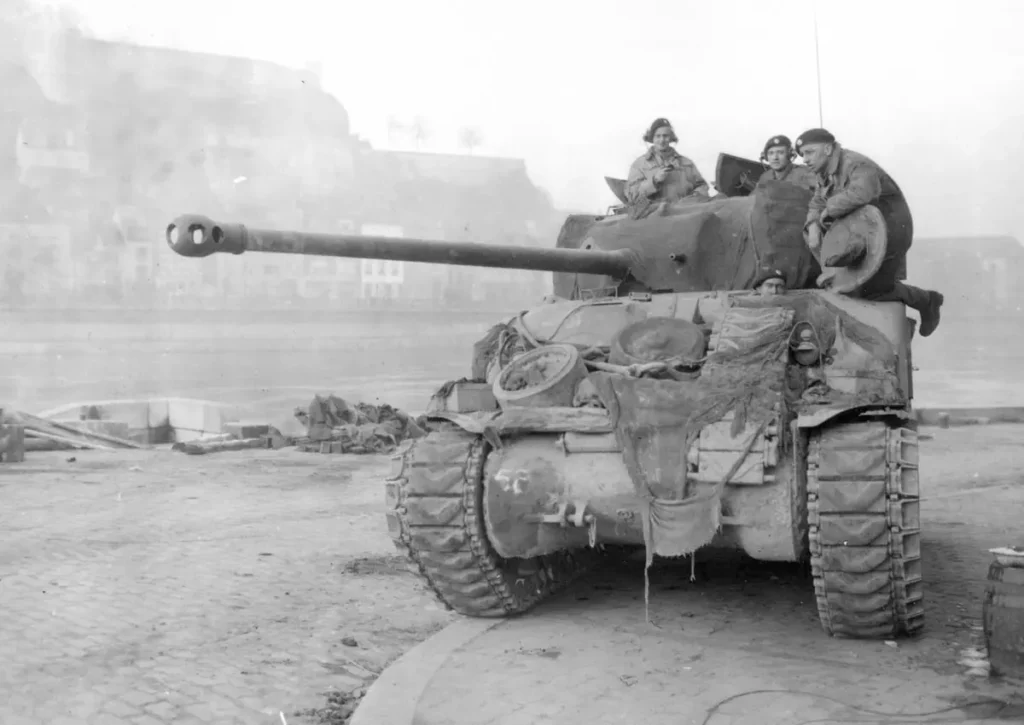
During World War II, the Royal Tank Regiment (RTR) played a crucial role in armored warfare, contributing significantly to Allied victories across multiple theaters of operations. Formed during World War I and formally established as the Royal Tank Corps in 1923, the regiment evolved rapidly in the interwar years, refining armored tactics and operational doctrines that would be tested in the crucible of World War II.
North Africa Campaign
One of the most famous theaters of operations for the RTR during World War II was North Africa, where they faced off against the formidable German Afrika Korps led by Field Marshal Erwin Rommel. Equipped with a mix of cruiser and infantry tanks, the RTR played a vital role in supporting the Eighth Army’s offensive operations.
During the early stages of the North African campaign, RTR crews faced significant challenges due to the harsh desert environment and the superior mobility of German Panzer divisions. However, through adaptation and operational experience, the RTR began to turn the tide at battles like Gazala and El Alamein. The Battle of El Alamein in October-November 1942 marked a crucial turning point, where RTR tanks supported infantry assaults and contributed to the defeat of Rommel’s forces, ultimately leading to the Allied liberation of North Africa.
Italy Campaign
Following the success in North Africa, the RTR continued its operations in Italy as part of the Allied campaign to liberate the Italian peninsula from Axis control. The rugged terrain and challenging conditions posed new obstacles for armored warfare, yet the RTR adapted their tactics and utilized tanks such as the Churchill and Sherman to great effect.
During the Italian campaign, the RTR participated in key battles such as the landings at Salerno in September 1943 and the subsequent advance northwards. Tanks provided essential fire support to infantry units, breached defensive lines, and engaged in armored clashes against German and Italian forces. The campaign in Italy showcased the versatility and resilience of the RTR in diverse operational environments.
Northwest Europe Campaign
In June 1944, the RTR played a significant role in the Allied invasion of Normandy, known as D-Day. RTR tanks landed on the beaches of Normandy and supported infantry units in their push inland against determined German resistance. The regiment continued to operate throughout the Northwest Europe campaign, participating in battles such as Operation Goodwood, the Battle of the Falaise Pocket, and the advance into Germany itself.
In Northwest Europe, the RTR’s armored formations played a crucial role in breakthrough operations, exploitation of gaps in enemy lines, and providing essential support to Allied infantry. The speed, firepower, and mobility of tanks were instrumental in maintaining momentum and securing key objectives as Allied forces advanced towards victory in Europe.
Technological and Tactical Innovations
Throughout World War II, the RTR pioneered technological advancements and tactical innovations in armored warfare. They introduced improved tank designs, such as the Churchill tank with its heavy armor and the Sherman tank with its reliability and firepower. RTR crews refined tactics for combined arms operations, integrating tanks with infantry, artillery, and air support to maximize battlefield effectiveness.
Legacy
The Royal Tank Regiment’s contributions during World War II were substantial, reflecting their role as a cornerstone of Allied armored forces. Their operational successes in North Africa, Italy, and Northwest Europe demonstrated the importance of armored mobility, firepower, and operational flexibility in modern warfare. The RTR’s legacy continues to influence modern armored doctrine and tactics within the British Army and serves as a testament to the courage and professionalism of its tank crews during one of history’s most challenging conflicts.